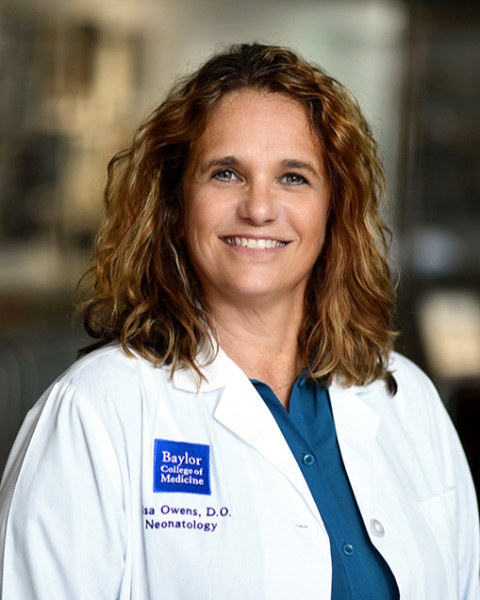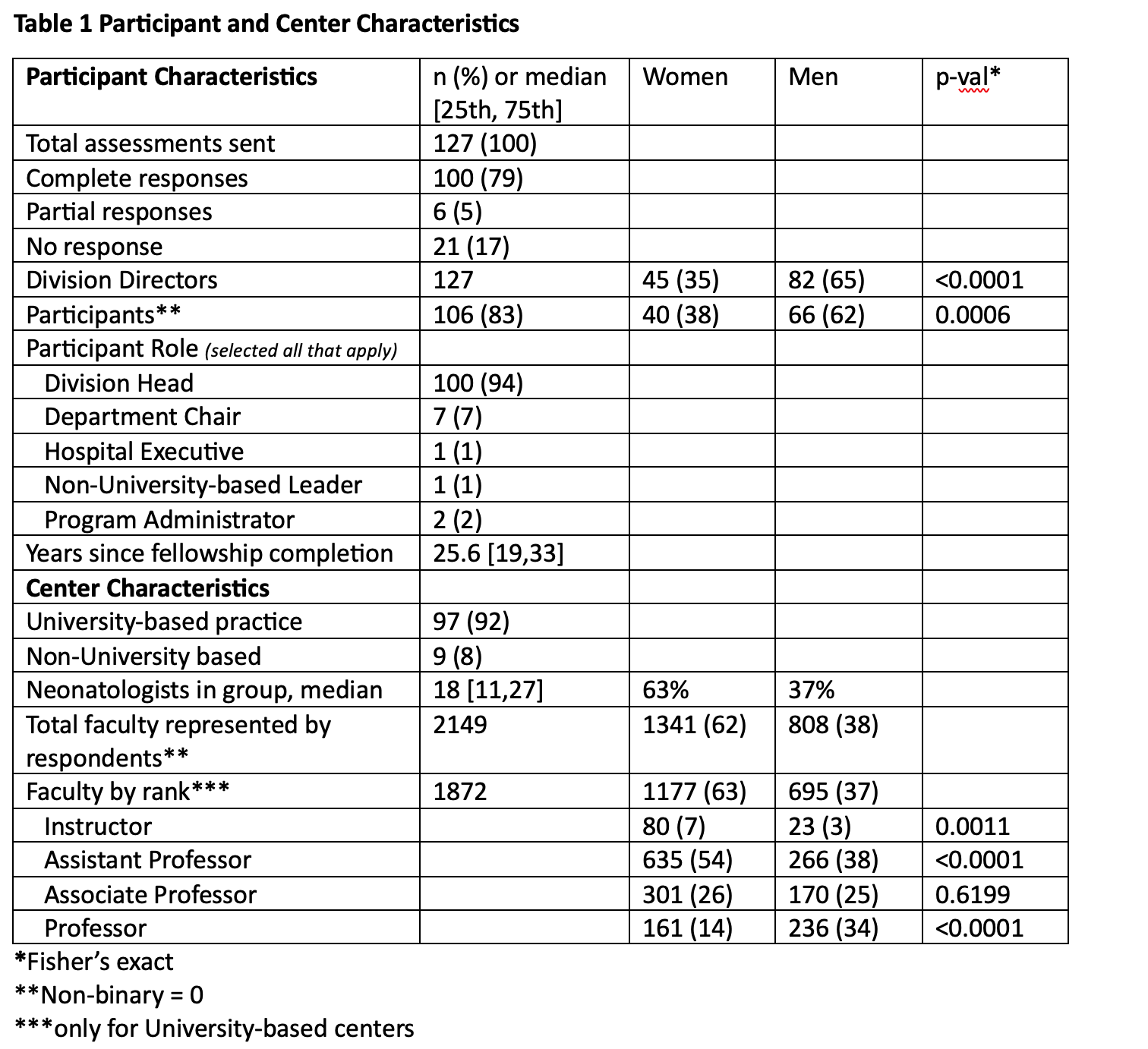Neonatology
Session: Neonatal General 1: NICU Care
53 - Perceptions of United States' Neonatology Division Leaders on Gender Equity
Friday, May 3, 2024
5:15 PM - 7:15 PM ET
Poster Number: 53
Publication Number: 53.457
Publication Number: 53.457

Lisa Owens, D.O.
Senior Faculty
Baylor College of Medicine
Houston, Texas, United States
Presenting Author(s)
Background: Gender inequities in medicine are well documented. Women predominate the neonatology workforce, yet the environment is often inadequate for career advancement and wellbeing. Division leaders are important advocates for women in neonatology.
Objective: To evaluate the perspectives of the Neonatology Division Leaders regarding the state of gender equity in academic neonatology centers.
Design/Methods: We created an assessment validated with a survey methodologist. Questions addressed center and leader characteristics, promotion timelines, leadership, compensation, benefits and differences for these domains by gender. We distributed this REDCap assessment from May-August 2023 to the 127 US academic Neonatal Division Directors via email. De-identified data were analyzed using Microsoft Excel and Tableau.
Results: Response rate was 83% (n=106). Center and director characteristics are shown in Table 1. 40% of respondents reported women in their division faced no inequities, though 63% reported gender inequity a middle-to-top priority to address. Half reported lack of bandwidth, personnel, and resources as the largest barrier to addressing gender inequities. Though the majority (73%) reported no gender difference in time to promotion, reporting the actual time to promotion had a low response rate. Two-thirds of divisional leadership positions and awards were held by women, commensurate with the percent of women faculty. Similar percentages of men and women held external leadership positions and fewer women were physician-scientists (Table 2). For those centers that reported analyzing compensation by gender (n=54), all reported no gender difference. Two-thirds have a Women in Medicine affinity group, but less than half have gender equity champions in their institution. Unless legally mandated, existence of potential gender-equity promoting practices was variable and uncertain by many leaders (Table 3).
Conclusion(s): Despite perceptions of minimal gender gaps in these domains in Neonatology Divisions, the survey results do not conform to national objective data. Several survey questions had no-response. A first step to address potential knowledge gaps of inequities and the support women faculty need is to track and report these metrics accurately and systematically. Transparency about these results could promote change to strengthen the workforce and help women physicians find the right workplace.


.png)
